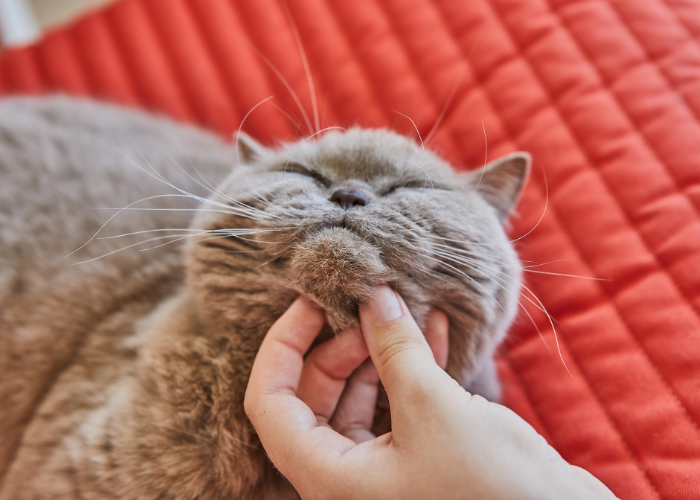New cat
How to set up your home to help your new cat settle in quickly
Cats, Adopters, Cat behaviour, Kitten

Just like people, every cat has a unique personality – with their own likes, dislikes and comfort zones. That goes for being touched: some cats love to cuddle up, others enjoy company but don’t like physical contact… and some cats prefer to keep to themselves!
As a cat owner, learning to read your cat’s signals and understanding what they’re comfortable with is essential for both their wellbeing and your relationship. Even the same cat might feel differently from one moment to the next, so it’s important to be mindful of this and only interact when they’ve given you the green light.
An easy way to keep interactions positive is to remember the acronym CAT:
Always give your cat choice over when and how they interact. Give them the chance to tell you if they want to be touched, where they want to be touched, and when they’ve had enough.
Keeping a small distance, crouch to your cat’s level and offer your hand. If they don’t respond, respect their choice and leave them alone. If your cat wants to interact with you, they’ll approach you and may rub their cheek on your hand.
After a few seconds of stroking, pull your hand away gently. Offering a break gives your cat the choice to ask for more, or move away if they’ve had enough. Even if they seem to be enjoying the interaction, it’s important to monitor how your cat is feeling. These check-ins also help them to feel in control and build trust.
And remember: most cats don’t like being picked up, as this removes their choice and sense of control.
.png)
Pay close attention to your cat’s body language both before and during any interaction, and adapt your approach accordingly. Cats communicate constantly through subtle cues, and noticing these helps ensure that your cat is comfortable to interact.
Tip: You can slow blink back at your cat! This is a positive way to communicate friendliness and strengthen your bond. While slow blinking is generally a sign of relaxation, it’s not always an invitation to touch.
Watch out for these behaviours and give your cat space if you notice them:
» Learn more about how to read your cat's body language
.png)
Think carefully about where you touch your cat. Most cats enjoy being touched on the chin, the cheeks and at the base of the ears. The stomach and base of the tail are sensitive areas for most cats, while the rest of the body varies between cats and should generally be avoided – especially if the cat isn’t familiar with you.
The best rule is to let your cat guide you. Limit touch to the areas they choose to rub against you, and avoid touching new areas unless your cat invites it.
.png)
Giving your cat choice and paying attention to their signals will help you build a trusting, positive relationship. And don’t forget: every cat is different!